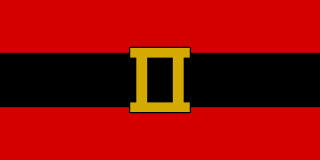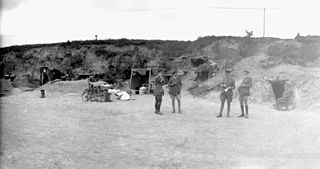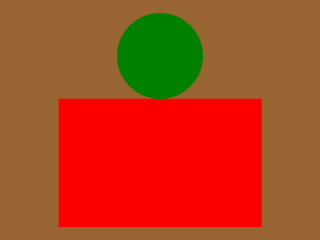This article needs additional citations for verification .(March 2019) |
This is a list of battles during the First World War in which the Canadian Expeditionary Force participated.
This article needs additional citations for verification .(March 2019) |
This is a list of battles during the First World War in which the Canadian Expeditionary Force participated.

| Campaign | Battle | Date |
|---|---|---|
| Battle of Neuve Chapelle | 10 March 1915 | |
| St. Eloi | 14–15 March 1915 | |
| Second Battle of Ypres | Battle of Gravenstafel | 22–23 April 1915 |
| Battle of St. Julien | 24 April 4 May 1915 | |
| Battle of Frezenberg | 8–13 May 1915 | |
| Battle of Bellewaerde Ridge | 24–25 May 1915 | |
| Second Battle of Artois | Battle of Aubers Ridge | 9 May 1915 |
| Battle of Festubert | 15–27 May 1915 | |
| Second Action at Givenchy | 15–16 May 1915 | |
| Third Battle of Artois | Battle of Loos
| 25 September–19 October 1915 |
| Actions of St Eloi Craters | 27 March–16 April 1916 | |
| Battle of Mont Sorrel | 2–13 June 1916 | |
| Battle of the Somme | Battle of Albert | 1–13 July 1916 |
| Battle of Bazentin Ridge | 14–25 July 1916 | |
| Battle of Pozières | 1–3 September 1916 | |
| Battle of Guillemont | 3–6 September 1916 | |
| Battle of Ginchy | 9 September 1916 | |
| Battle of Flers–Courcelette | 15–22 September 1916 | |
| Battle of Thiepval Ridge | 26–29 September 1916 | |
| Battle of Le Transloy | 1–18 October 1916 | |
| Battle of the Ancre Heights | 1 October–11 November 1916 | |
| Battle of the Ancre | 13–18 November 1916 | |
| Battle of Arras | Battle of Vimy Ridge | 9–12 April 1917 |
| First Scarpe, 1917 | 9–14 April 1917 | |
Second Scarpe, 1917
| 23–24 April 1917 | |
| Battle of Arleux | 28–29 April 1917 | |
Third Scarpe, 1917
| 3–4 May 1917 | |
| Affairs south of the Souchez River | 3–25 June 1917 | |
| Capture of Avion | 26–29 June 1917 | |
| Battle of Hill 70 | 15–25 August 1917 | |
| Battle of Messines | 7–14 June 1917 | |
| Third Battle of Ypres | Battle of Pilckem Ridge | 31 July–3 August 1917 |
| Battle of Langemarck | 16–18 August 1917 | |
| Battle of the Menin Road Ridge | 20–25 September 1917 | |
| Battle of Polygon Wood | 26 September–3 October 1917 | |
| Battle of Broodseinde | 4 October 1917 | |
| Battle of Poelcappelle | 9 October 1917 | |
| First Battle of Passchendaele | 12–22 October 1917 | |
| Second Battle of Passchendaele | 26 October–10 November 1917 | |
| Battle of Cambrai | 20 November–8 December 1917 | |
| German spring offensive | Operation Michael
| 21 March–4 April 1918 |
| Battle of Hamel | 4 July 1918 | |
Battles of the Lys
| 9–17 April 1918 | |
| Action of La Becque | 28 June 1918 | |
| Hundred Days Offensive | Battle of Amiens
| 8–30 August 1918 |
Second Battles of the Somme, 1918
| 21 August–3 September 1918 | |
| Battle of the Scarpe | 26–30 August 1918 | |
| Drocourt-Queant Canal | 2–3 September 1918 | |
| Battle of Havrincourt | 12 September 1918 | |
| Battle of Épehy | 18 September 1918 | |
| Battle of the Canal du Nord | 27 September – 1 October 1918 | |
| Fifth Battle of Ypres | 28 September – 2 October 1918 | |
Battle of St Quentin Canal
| 29 September – 5 October 1918 | |
| Battle of Cambrai | 8–9 October 1918 | |
| Battle of Courtrai | 14–19 October 1918 | |
| Battle of the Selle | 17–25 October 1918 | |
| Battle of the Lys and the Escaut | 1–11 November 1918 | |
| Battle of the Sambre | 4 November 1918 | |
| Passage of the Grande Honnelle | 5–7 November 1918 | |
The British Expeditionary Force (BEF) was the six divisions the British Army sent to the Western Front during the First World War. Planning for a British Expeditionary Force began with the 1906–1912 Haldane Reforms of the British Army carried out by the Secretary of State for War Richard Haldane following the Second Boer War (1899–1902).

The British Second Army was a field army active during the First and Second World Wars. During the First World War the army was active on the Western Front throughout most of the war and later active in Italy. During the Second World War the army was the main British contribution to the Normandy landings on 6 June 1944 and advance across Europe.

The Canadian Corps was a World War I corps formed from the Canadian Expeditionary Force in September 1915 after the arrival of the 2nd Canadian Division in France. The corps was expanded by the addition of the 3rd Canadian Division in December 1915 and the 4th Canadian Division in August 1916. The organization of a 5th Canadian Division began in February 1917 but it was still not fully formed when it was broken up in February 1918 and its men used to reinforce the other four divisions.

The Battle of Ypres was a series of engagements during the First World War, near the Belgian city of Ypres, between the German and the Allied armies. During the five engagements, casualties may have surpassed one million.
The Canadian Expeditionary Force (CEF) was the expeditionary field force of Canada during the First World War. It was formed following Britain’s declaration of war on the German Empire on 15 August 1914, with an initial strength of one infantry division. The division subsequently fought at Ypres on the Western Front, with a newly raised second division reinforcing the committed units to form the Canadian Corps. The CEF and corps was eventually expanded to four infantry divisions, which were all committed to the fighting in France and Belgium along the Western Front. A fifth division was partially raised in 1917, but was broken up in 1918 and used as reinforcements following heavy casualties.

The Allied intervention in the Russian Civil War consisted of a series of multi-national military expeditions that began in 1918. The initial impetus behind the interventions was to secure munitions and supply depots from falling into the German Empire's hands, particularly after the Bolsheviks signed the Treaty of Brest-Litovsk, and to rescue the Allied forces that had become trapped within Russia after the 1917 October Revolution. After the Armistice of 11 November 1918, the Allied plan changed to helping the White forces in the Russian Civil War. After the Whites collapsed, the Allies withdrew their forces from Russia by 1925.

The Entente, or the Allies, were an international military coalition of countries led by France, the United Kingdom, Russia, the United States, Italy, and Japan against the Central Powers of Germany, Austria-Hungary, the Ottoman Empire, and Bulgaria in World War I (1914–1918).
The 13th Battalion (Royal Highlanders of Canada) of the Canadian Expeditionary Force was an active service battalion during the First World War.

The Indian Army, also called the British Indian Army, was involved in World War I as part of the British Empire. More than one million Indian troops served overseas, of whom more than 60,000 died during the war.
Expeditionary warfare is a military invasion of a foreign territory, especially away from established bases. Expeditionary forces were in part the antecedent of the modern concept of rapid deployment forces. Traditionally, expeditionary forces were essentially self-sustaining with an organic logistics capability and with a full array of supporting arms.

The 5th Battalion Canadian Mounted Rifles were a mounted infantry unit of the Canadian Expeditionary Force (CEF) during World War I. The unit was raised from volunteers of the 7th and XIth (Canadian) Hussars from the Eastern Townships of Quebec.

The 2nd Battalion, Canadian Expeditionary Force was an infantry battalion of the Canadian Army created in response to outbreak of the First World War in August 1914. The battalion comprised local militia in many regions of Ontario. Men came from as far away as Sault Ste. Marie to join in Canada's military endeavour. Local militia gathered at Valcartier, in August 1914 and became part of the 2nd Battalion.

The Allied leaders of World War I were the political and military figures that fought for or supported the Allied Powers during World War I.

The Canadian Siberian Expeditionary Force (French: Corps expéditionnaire sibérien) (also referred to as the Canadian Expeditionary Force (Siberia) or simply the C.S.E.F.) was a Canadian military force sent to Vladivostok, Russia, during the Russian Revolution to bolster the allied presence, oppose the Bolshevik Revolution and attempt to keep Russia in the fight against Germany. Composed of 4,192 soldiers and authorized in August 1918, the force returned to Canada between April and June 1919. The force was commanded by Major General James H. Elmsley. During this time, the C.S.E.F. saw little fighting, with fewer than 100 troops proceeding "up country" to Omsk, to serve as administrative staff for 1,500 British troops aiding the anti-Bolshevik White Russian government of Admiral Alexander Kolchak. Most Canadians remained in Vladivostok, undertaking routine drill and policing duties in the volatile port city.

The 22nd Battalion, CEF, was an infantry battalion of the Canadian Expeditionary Force in the Great War.

The 10th Battalion, Canadian Expeditionary Force was a unit of the First World War Canadian Expeditionary Force (CEF), specifically in the 1st Canadian Division from 1914 to 1919. The battalion participated in every major Canadian battle of the First World War, and set a record for the most decorations earned by a Canadian unit in a single battle at Hill 70. The unit was known to its contemporaries simply as The Fighting Tenth.
The 156th Brigade was an infantry brigade formation of the British Army. The brigade saw active service in both the First and the Second World Wars with the 52nd (Lowland) Infantry Division.

The 1st Canadian Infantry Battalion was a battalion of the Canadian Expeditionary Force that saw service in the First World War.

The 18th Battalion, CEF, was an infantry battalion of the Canadian Expeditionary Force in the Great War.

The 25th Battalion, CEF was a unit in the Canadian Expeditionary Force during the Great War. It was the second infantry battalion of ten to be raised in Nova Scotia during the war. The 25th served in Belgium and France as part of the 5th Canadian Brigade, 2nd Canadian Division from 16 September 1915 until the end of the war. Regimental headquarters were established at the Halifax Armouries, with recruitment offices in Sydney, Amherst, New Glasgow, Truro and Yarmouth. Of the 1000 Nova Scotians that started with the battalion, after the first year of fighting, 100 were left in the battalion, while 900 men were killed, taken prisoner, missing or injured.